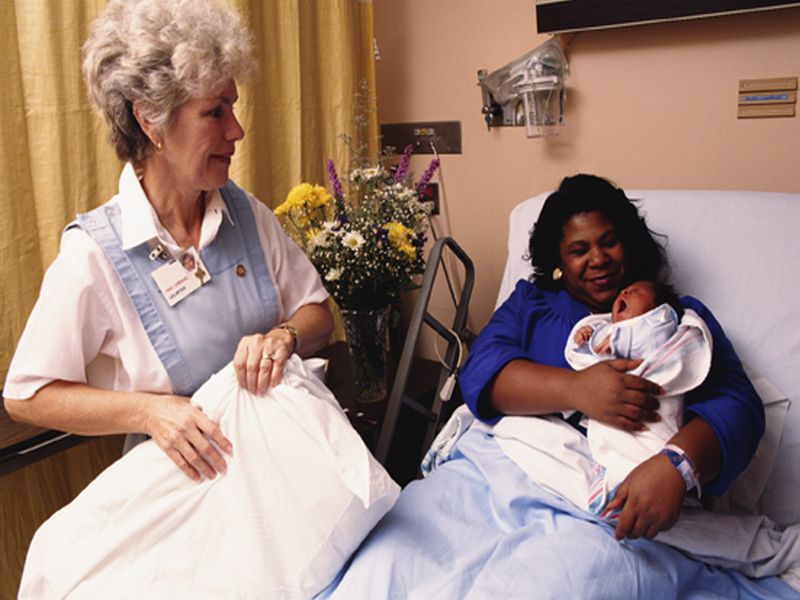Get Healthy!

- Posted January 6, 2020
Out-of-Pocket Medical Costs Average $4,500 for Many New U.S. Parents
If you're an expectant parent, you know you're in for some sleepless nights once the baby comes. What you might not expect is almost $5,000 in medical costs.
A new study warns parents-to-be that average out-of-pocket costs for health care during pregnancy, delivery and the first three months after birth jumped to more than $4,500 in 2015 from just over $3,000 in 2008.
That's for women with employer-based health insurance.
"There's a bit of a misperception that the Affordable Care Act [ACA] covers all maternity care. While it does require coverage of maternity services, it does not prohibit cost-sharing for those services. You might have co-pays, deductibles or co-insurance. Maternity coverage is not like coverage for preventive services," explained the study's lead author, Dr. Michelle Moniz. She's an assistant professor in the department of obstetrics and gynecology at the University of Michigan.
"We found that 98% of women had out-of-pocket costs," Moniz said.
These financial burdens put patients at risk of delaying or forgoing some types of care, she noted.
"Right now, the U.S. is the only developed country that has experienced rising maternal mortality. We should be trying to remove barriers to getting recommended care," Moniz said.
The study included a national sample of more than 650,000 women. Most were between 21 and 41 years old.
The women were enrolled in more than 84,000 different employer-sponsored health plans. All gave birth sometime between 2008 (before the ACA) and 2015 (after the ACA).
The researchers measured health-care costs incurred from 12 months before delivery and until three months after birth for services that might have influenced pregnancy outcomes.
For all types of births, average total out-of-pocket spending for maternity care was $3,069 in 2008. That increased to $4,569 in 2015, the findings showed.
Average total out-of-pocket costs for vaginal birth jumped from about $2,900 in 2008 to more than $4,300 in 2015. For cesarean birth, spending increased from almost $3,400 to nearly $5,200 in 2015. Moniz said the bulk of the cost is for labor and delivery care.
"Our study didn't evaluate the patient perspective, so I don't know whether patients are aware of these costs," Moniz said. "Most are thinking about buying things on their baby registry, not what the labor and delivery bill will be. I don't know too many patients with $4,500 just lying around."
Moniz said that rising costs weren't necessarily the driving factor in their findings. Rather, it seemed that women were bearing a higher proportion of total costs. In 2008, women who had a vaginal birth covered about 13% of the costs. By 2015, that number had jumped to 21%. Women who had a C-section were on the hook for about 10% of costs in 2008. By 2015, it was 15%.
She said health-care providers need to be aware of these potential costs, and they need to educate their patients.
"A critical take-home message is that we need more robust policies to try to restrict out-of-pocket spending on maternity care to improve maternal and fetal health," Moniz said.
Dr. Tara Shirazian is president and founder of Saving Mothers (a maternal health nonprofit).
"I was not surprised to see there's an uptick in cost to women. The whole health-care system has gotten more costly for patients," Shirazian said.
Costs and increasing disparities in the health-care system "may be leading to less maternal health care, and maternal death rates are highest in women who don't have access to prenatal care," she said.
"Maternity services should be nationally covered like it is in other places," Shirazian said. Lack of universally available care for moms can lead to more complications, and that ends up driving up costs for everyone, she added.
The study was published in the January issue of Health Affairs.
More information
Check out the U.S. Department of Agriculture's estimate on the cost of raising a child through age 17.
SOURCES: Michelle Moniz, M.D., assistant professor, department of obstetrics and gynecology, University of Michigan, Ann Arbor; Tara Shirazian, M.D., president and founder, Saving Mothers, and obstetrician and gynecologist, NYU Langone Health, New York City; January 2020, Health Affairs





